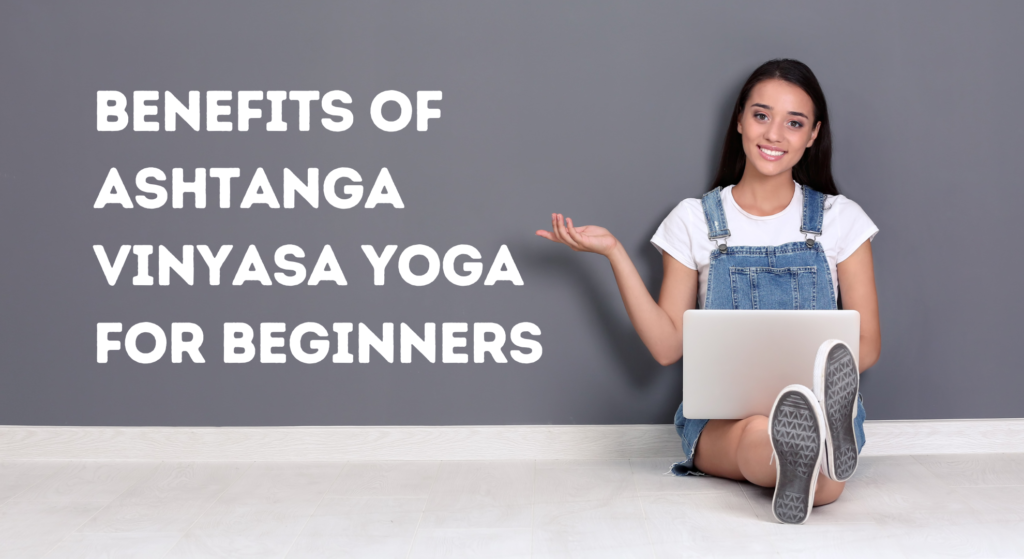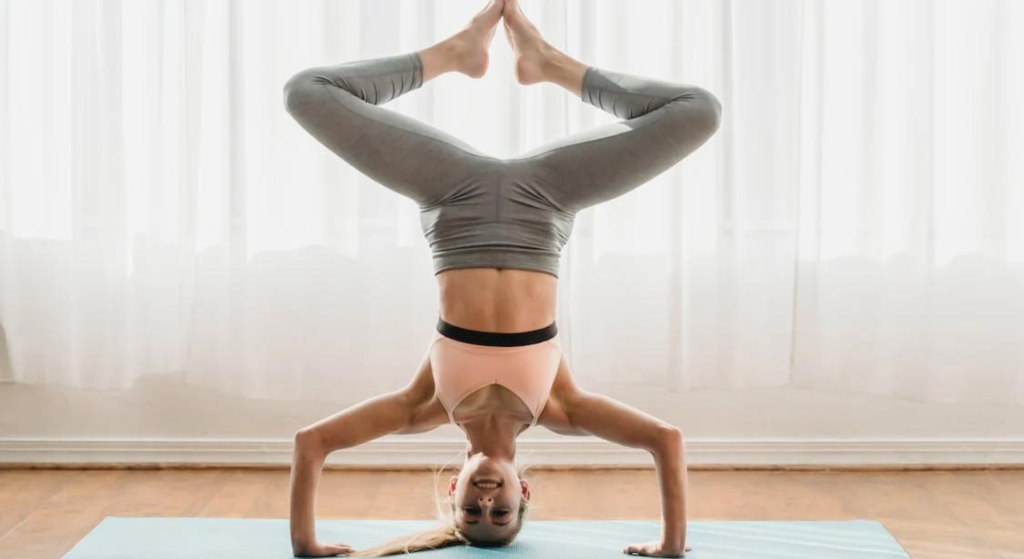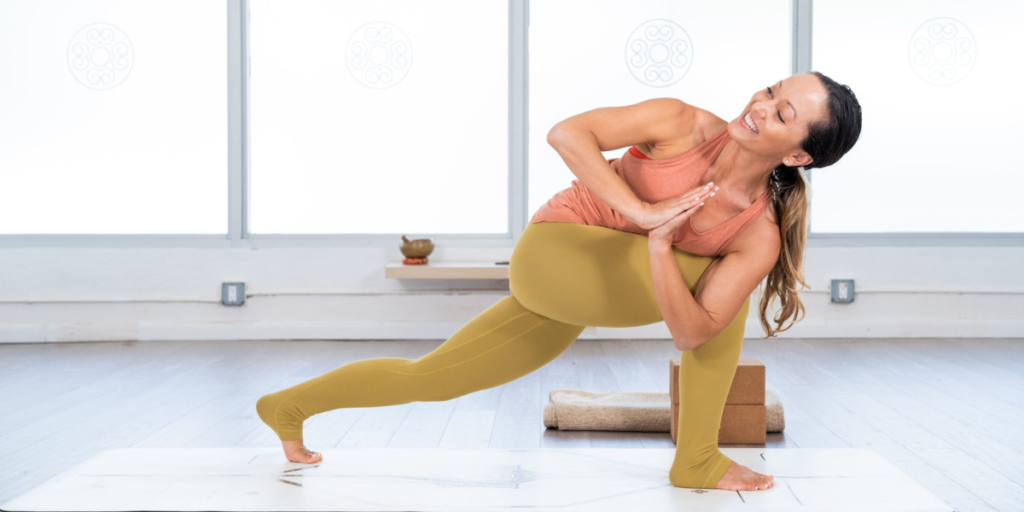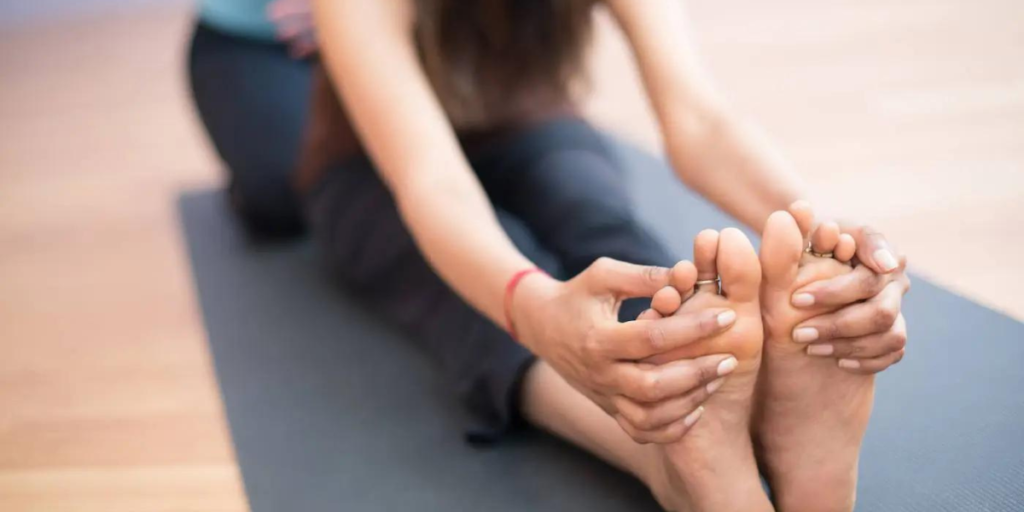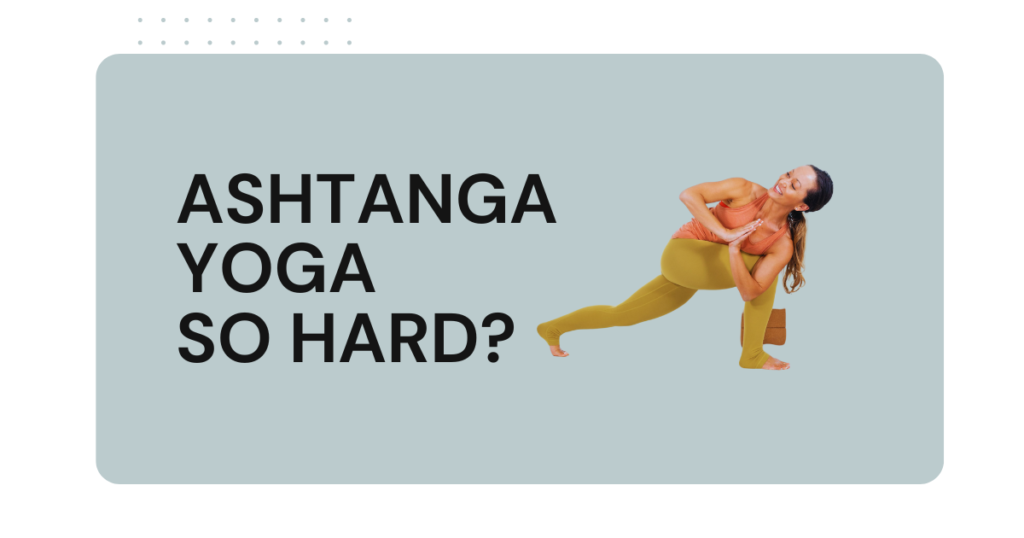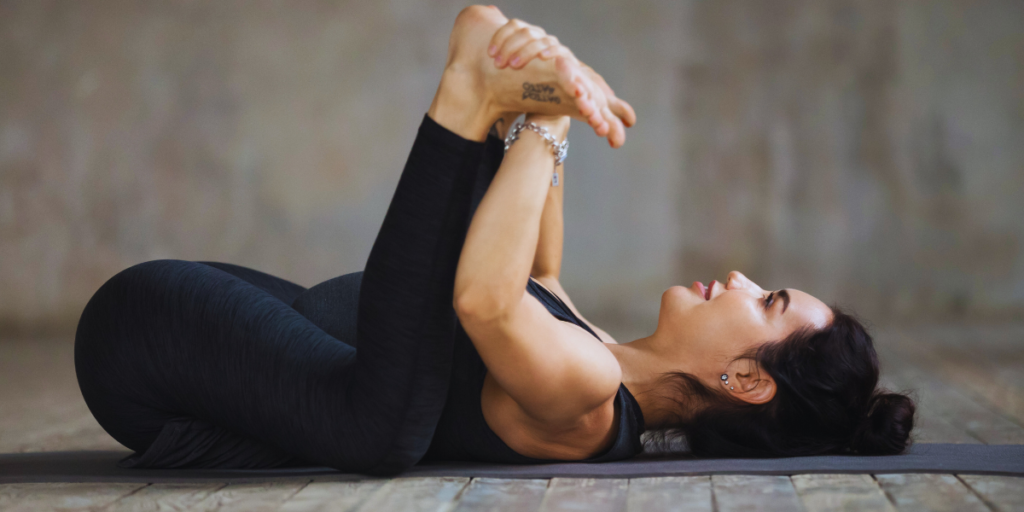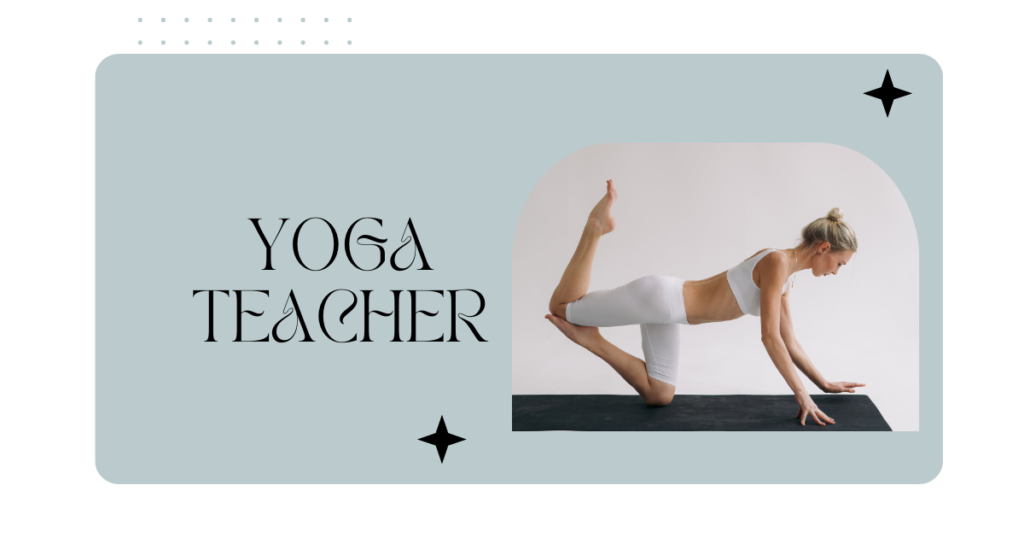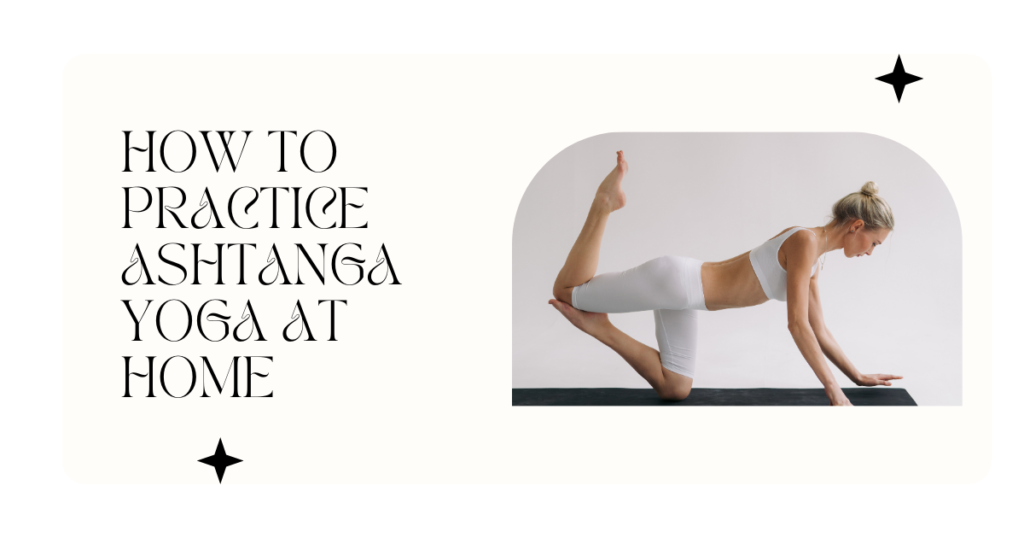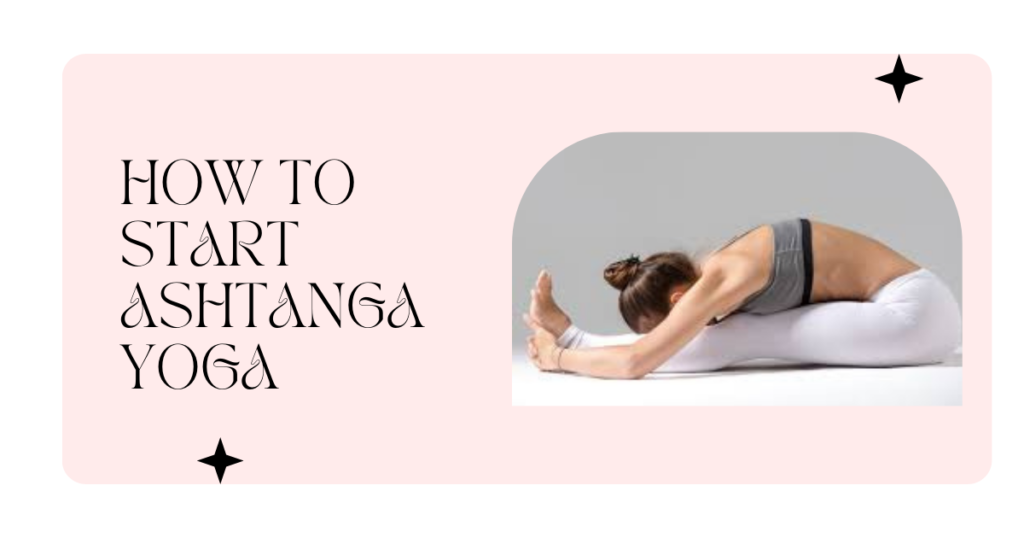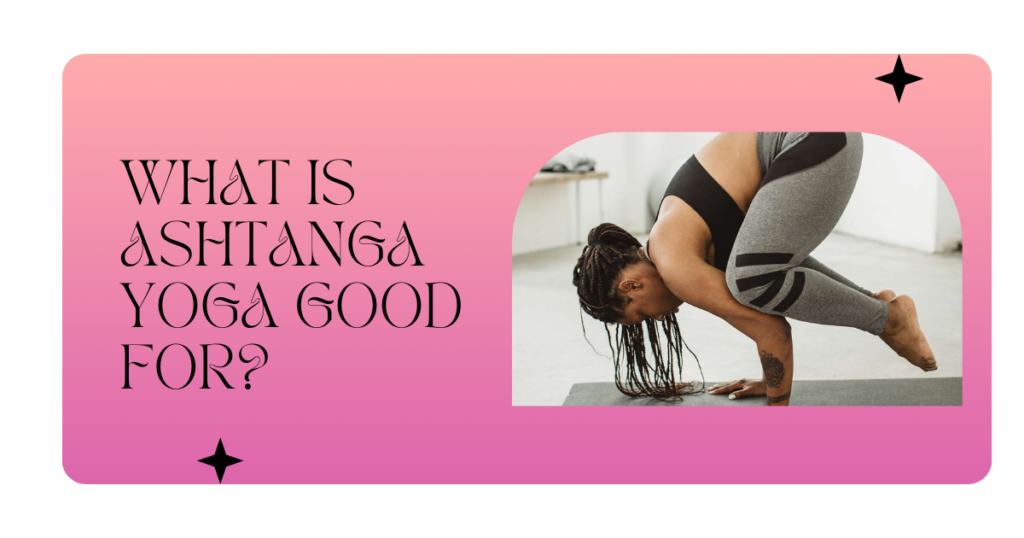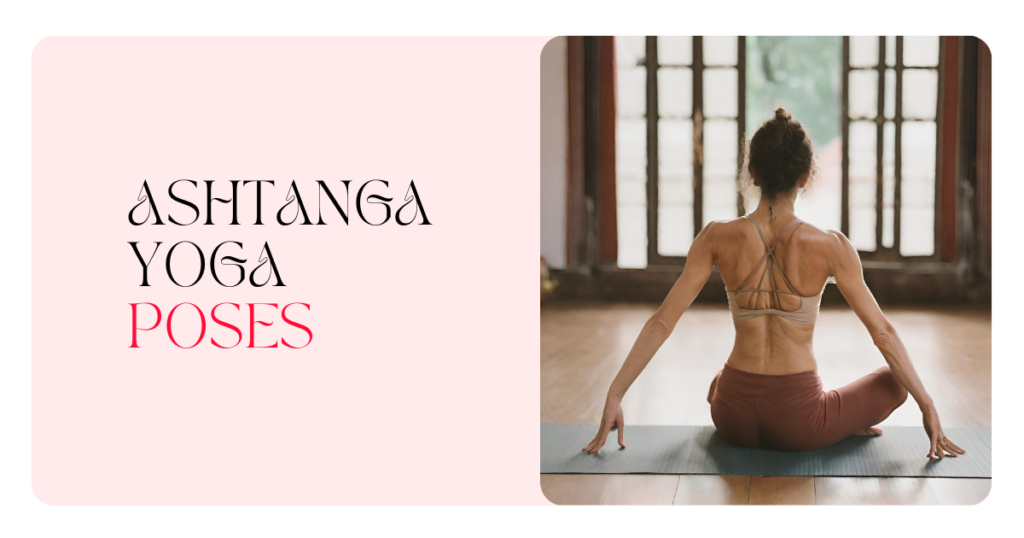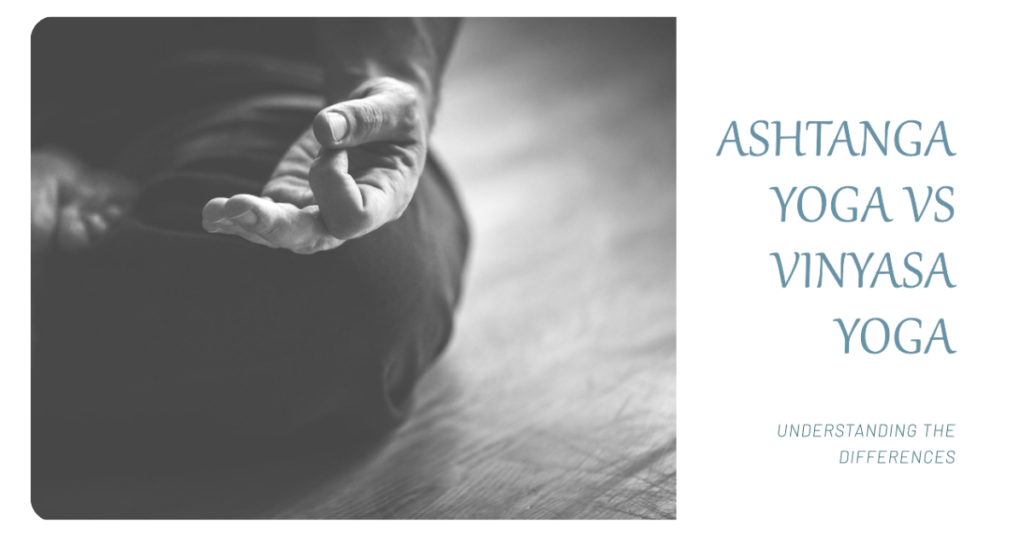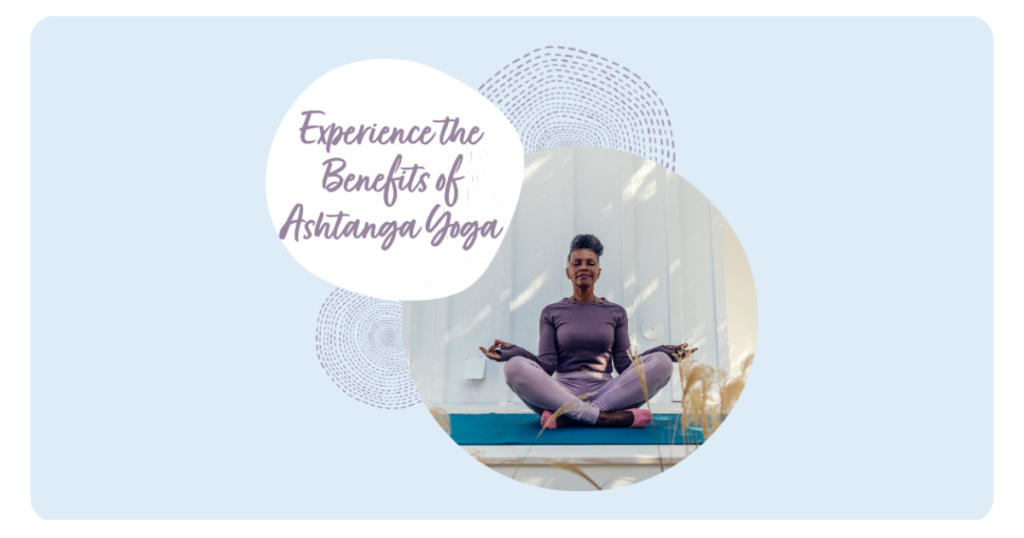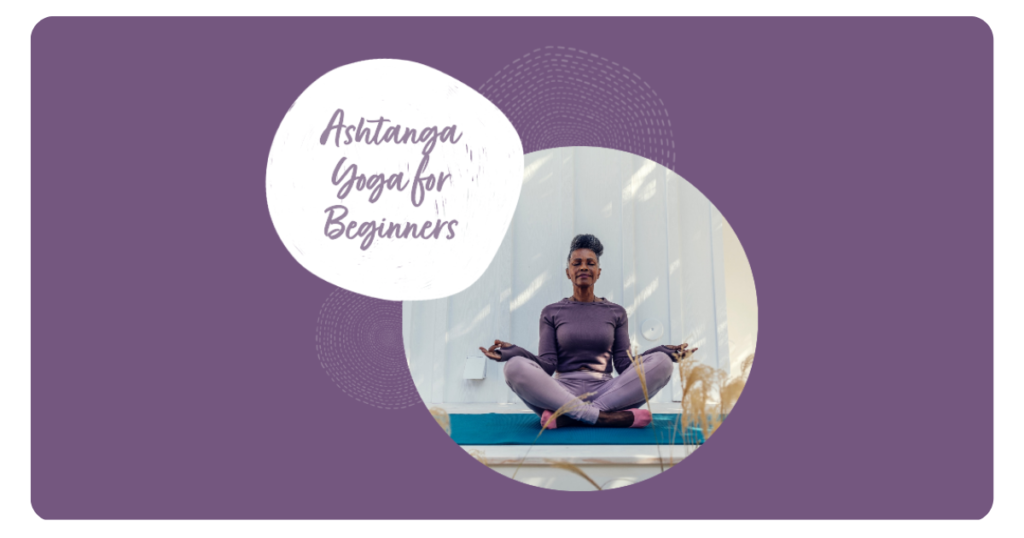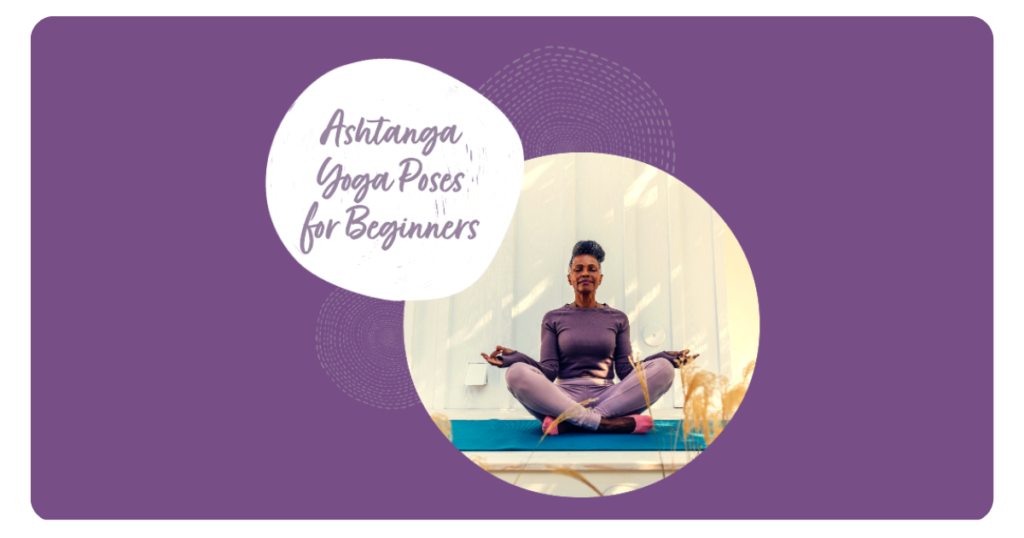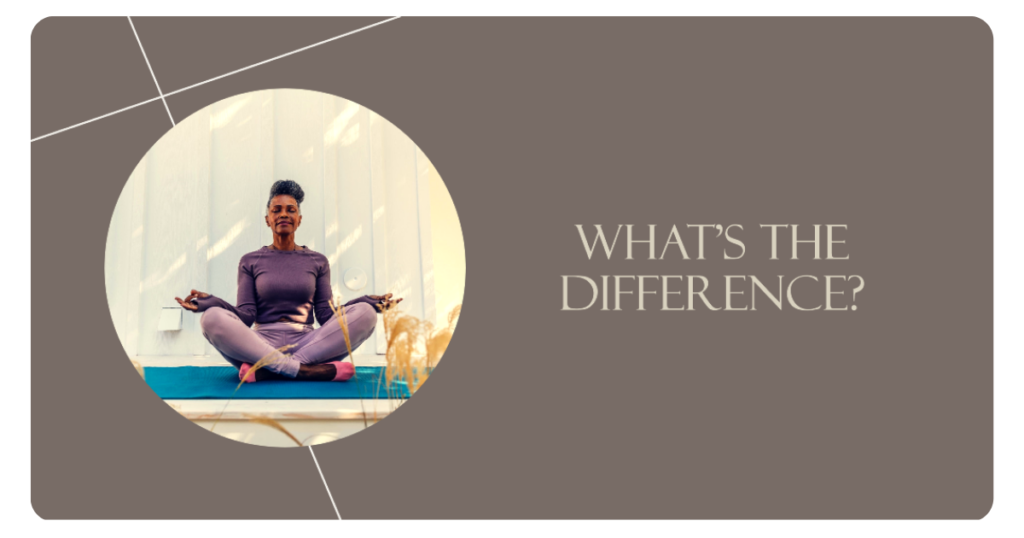
Yoga has become a worldwide phenomenon, with millions of people practicing various styles to improve their physical, mental, and spiritual well-being. However, with the surge in popularity, there is often confusion surrounding the different types of yoga, particularly when it comes to Ashtanga, Vinyasa, and Hatha. These three styles have distinct characteristics, and understanding their differences can help you choose the practice that aligns best with your goals and preferences.
In this comprehensive article, we will explore the key distinctions between Ashtanga vs Vinyasa vs Hatha yoga, providing you with the knowledge to make an informed decision about which style to pursue.
What is Ashtanga Yoga?
Ashtanga yoga, also known as Ashtanga Vinyasa Yoga, is a traditional and physically demanding style of yoga that follows a set sequence of postures (asanas). It is based on the Eight Limbs of Yoga, as outlined in the Yoga Sutras of Patanjali [refer to this source for more information on the Eight Limbs:
The practice of Ashtanga yoga consists of two main sequences: the Primary Series (Yoga Chikitsa) and the Secondary Series (Nadi Shodhana). These sequences are composed of a specific order of postures that are linked together by a series of vinyasas (flowing movements synchronized with the breath). The practice emphasizes the following key elements:
- Breath: Ashtanga yoga places a strong emphasis on controlled breathing (Ujjayi pranayama) to facilitate the movement between postures. The Ujjayi breath is a deep, audible breath that is initiated from the back of the throat, creating a subtle hissing sound. This breath is meant to be maintained throughout the entire practice, helping to build internal heat (tapas) and focus the mind.
- Drishti: Practitioners are encouraged to maintain a specific gaze (drishti) during each posture to enhance focus and concentration. There are nine principal drishtis in Ashtanga yoga, each directing the practitioner’s gaze to a specific point. For example, in Padmasana (Lotus Pose), the drishti is focused on the tip of the nose, helping to cultivate inward awareness and concentration.
- Vinyasas: The transitions between postures involve a series of movements (such as Chaturanga Dandasana and Upward-Facing Dog) that flow seamlessly with the breath. The vinyasas create an internal heat (tapas) that helps to purify the body and prepare it for the more challenging postures.
The Ashtanga yoga method follows a specific sequence known as the “Yoga Mala,” which consists of the Primary Series (Yoga Chikitsa), Secondary Series (Nadi Shodhana), Third Series (Sthira Bhaga), and Fourth Series (Savarna Bhaga). These series progress in difficulty, with the Primary Series being the foundational sequence that practitioners must master before moving on to the more advanced series.
In addition to the physical practice, Ashtanga yoga emphasizes the philosophical and ethical principles of the Eight Limbs of Yoga, which include:
By integrating these principles into their practice, Ashtanga yoga practitioners aim to cultivate not only physical strength and flexibility but also mental clarity, emotional stability, and spiritual growth.
Ashtanga yoga is considered a traditional and physically demanding practice, best suited for individuals with a certain level of flexibility, strength, and endurance. It is often recommended to practice under the guidance of an experienced Ashtanga teacher, especially for beginners.
Who is Ashtanga Yoga Best Suited For?
Ashtanga yoga is a challenging practice that requires dedication and perseverance. It is often recommended for:
- Experienced yoga practitioners: Those who have a solid foundation in yoga and are looking to deepen their practice. The set sequence and challenging nature of Ashtanga yoga can provide a structured path for experienced practitioners to advance their practice.
- Physically fit individuals: Ashtanga yoga demands a certain level of strength, flexibility, and cardiovascular endurance. The continuous flow of postures, combined with the emphasis on controlled breathing, can be physically taxing, especially for beginners.
- Individuals seeking discipline and routine: The set sequence of postures in Ashtanga yoga provides a structured and consistent practice. This can be particularly appealing for those who thrive on routine and find comfort in a well-defined practice.
- Those interested in the traditional aspects of yoga: Ashtanga yoga closely follows the principles outlined in the Yoga Sutras and emphasizes the Eight Limbs of Yoga, making it a suitable choice for individuals seeking a more traditional and holistic approach to yoga.
- Athletes and individuals with an active lifestyle: The challenging nature of Ashtanga yoga can complement the training regimens of athletes and active individuals, helping to build strength, flexibility, and endurance.
It is important to note that Ashtanga yoga should be approached with caution, especially for beginners or those with injuries or medical conditions. It is always advisable to seek guidance from a qualified Ashtanga instructor to ensure a safe and effective practice. Proper preparation, gradual progression, and listening to one’s body are crucial in the Ashtanga yoga journey.
Additionally, it is worth mentioning that Ashtanga yoga is often practiced in a heated room (known as “Mysore style”), which can add an extra level of intensity and challenge to the practice. This aspect of Ashtanga yoga may not be suitable for everyone, and it is essential to consult with a teacher and prioritize safety and personal limitations.
What is Vinyasa Yoga?
Vinyasa yoga is a dynamic and flowing style of yoga that emphasizes the synchronization of breath with movement. The term “Vinyasa” literally means “to place in a special way,” referring to the intentional and mindful sequencing of postures in a particular order.
Unlike Ashtanga yoga, which follows a set sequence, Vinyasa yoga allows for more creativity and variation in the sequencing of postures. Vinyasa teachers often design their own sequences, tailoring them to the specific needs and abilities of their students or to a particular theme or intention.
The key principles of Vinyasa yoga include:
- Breath-synchronized movement: In Vinyasa yoga, each movement is synchronized with the breath, creating a fluid and rhythmic flow between postures. This breath-movement connection is known as “Vinyasa,” and it is a defining characteristic of this style.
- Sun Salutations (Surya Namaskar): Most Vinyasa classes begin with a series of Sun Salutations, which serve as a warm-up and help establish the rhythm of the breath and movement.
- Creative sequencing: Vinyasa teachers have the freedom to create unique sequences that may incorporate a variety of postures, including standing poses, backbends, arm balances, inversions, and more. This creativity allows for a diverse and challenging practice that can be tailored to the needs of the students.
- Emphasis on transitions: In Vinyasa yoga, the transitions between postures are just as important as the postures themselves. The smooth and mindful transitions, often involving plank poses and chaturanga dandasanas, are an integral part of the practice.
- Variety of styles: Vinyasa yoga encompasses a wide range of styles and approaches, including Power Yoga, Baptiste Yoga, and various fusion styles that incorporate elements from different yoga traditions.
While Vinyasa yoga can be physically demanding, it offers a level of flexibility and adaptability that allows practitioners of various levels to participate and progress at their own pace. The creative sequencing and emphasis on breath-movement synchronization can help cultivate mindfulness, strength, and flexibility.
Who is Vinyasa Yoga Recommended For?
Vinyasa yoga is a versatile practice that can be suitable for a wide range of individuals, including:
- Those seeking a dynamic and challenging practice: The flowing nature of Vinyasa yoga, combined with the creative sequencing and incorporation of various postures, can provide a physically demanding and invigorating workout.
- Individuals with some yoga experience: While Vinyasa yoga can be modified for beginners, it is generally recommended to have a basic understanding of yoga postures and principles before attempting a Vinyasa class. This prior experience can help ensure a safer and more enjoyable practice.
- People with an active lifestyle: The athletic nature of Vinyasa yoga can complement the training regimens of athletes, dancers, and individuals with an active lifestyle, helping to improve strength, flexibility, and cardiovascular endurance.
- Those seeking variety and creativity: The diversity of sequences and styles within Vinyasa yoga can appeal to individuals who appreciate variety and creativity in their practice, preventing boredom and promoting continued growth and challenge.
- Practitioners looking for a mindful practice: Despite its dynamic nature, Vinyasa yoga still emphasizes the connection between breath and movement, which can help cultivate mindfulness and presence during the practice.
It is important to note that Vinyasa yoga classes can vary significantly in intensity and level of difficulty, depending on the specific style and the teacher’s approach. It is always recommended to communicate with the instructor about your experience level and any limitations or injuries, so they can provide appropriate modifications and ensure a safe and enjoyable practice.
Additionally, it is crucial to listen to your body and respect your personal boundaries. While Vinyasa yoga can be challenging, it should not come at the expense of proper alignment or causing injury. A skilled Vinyasa teacher will provide options and variations to accommodate different levels of experience and ability.
What is Hatha Yoga?
Hatha yoga is often considered an “umbrella” term that encompasses the physical practices of yoga, including asanas (postures), pranayama (breathwork), and meditation. The word “Hatha” is derived from the Sanskrit words “ha,” meaning sun, and “tha,” meaning moon, representing the balance and union of opposites within the practice.
While Ashtanga and Vinyasa yoga are specific styles within the broader Hatha yoga tradition, Hatha yoga itself is a more general term that encompasses a wide range of practices and approaches. Some key characteristics of Hatha yoga include:
- Slower pace: Hatha yoga classes tend to move at a slower pace compared to more dynamic styles like Ashtanga or Vinyasa. This allows for a greater emphasis on proper alignment, breath awareness, and the subtleties of each posture.
- Use of props: Hatha yoga often incorporates the use of props such as blocks, straps, blankets, and bolsters to aid in the correct alignment and accessibility of postures, making the practice more inclusive for practitioners of various levels and abilities.
- Focus on alignment: In Hatha yoga, proper alignment and the precise execution of postures are emphasized to ensure safety and maximize the benefits of each asana.
- Incorporation of pranayama: Many Hatha yoga classes include dedicated time for pranayama (breathwork) practices, which can help cultivate awareness, relaxation, and control over the breath.
- Gentle introduction for beginners: Hatha yoga is often recommended as a gentle introduction to yoga for beginners, as it provides a solid foundation in the basic postures and principles before progressing to more advanced styles.
Within the broad category of Hatha yoga, there are various specific styles and approaches, each with its own unique characteristics and emphasis. Some examples include:
- Iyengar Yoga: This style, developed by B.K.S. Iyengar, places a strong emphasis on precision, alignment, and the use of props to ensure proper form and accessibility for all practitioners.
- Anusara Yoga: Anusara yoga emphasizes the principles of alignment, heart-oriented philosophy, and the celebration of the divine within each individual.
- Sivananda Yoga: This classical style focuses on proper breathing, dietary principles, relaxation techniques, and the integration of yoga philosophy into daily life.
- Restorative Yoga: Restorative yoga involves the use of props to support the body in passive, relaxing postures, promoting deep relaxation and stress relief.
While Hatha yoga may not be as physically demanding as Ashtanga or Vinyasa styles, it offers a solid foundation in the principles and postures of yoga, making it an accessible and inclusive practice for individuals of various ages, fitness levels, and abilities.
Key Differences Between Ashtanga vs Vinyasa vs Hatha Yoga
To better understand the distinctions between these three styles of yoga, let’s outline their key differences in the following table:
| Aspect | Ashtanga Yoga | Vinyasa Yoga | Hatha Yoga |
| Sequence | Fixed set sequence (Primary and Secondary Series) | Creative sequencing, no set order | Variety of postures, no set sequence |
| Pace | Fast-paced, continuous flow | Moderate to fast-paced, flowing | Slower paced, more static holds |
| Intensity | High intensity, physically demanding | Moderate to high intensity | Gentle to moderate intensity |
| Breath Emphasis | Strong emphasis on Ujjayi breath | Breath synchronized with movement | Emphasis on breath awareness |
| Use of Props | Minimal use of props | Some use of props | Frequent use of props |
| Approach | Traditional, predetermined series | Creative, diverse styles | Classical, foundational approach |
| Difficulty Level | Advanced, requires experience | Adaptable for various levels | Suitable for beginners |
| Philosophy | Follows the Eight Limbs of Yoga | Varies based on style | Focuses on principles of Hatha Yoga |
This table highlights the key distinctions in terms of sequence, pace, intensity, breath emphasis, use of props, overall approach, difficulty level, and philosophical underpinnings. It’s important to note that while these differences exist, there can be some overlap and variations within each style, depending on the teacher and specific approach.
Which Style is Right for You?
Choosing the right yoga style can enhance your practice and help you achieve your desired goals more effectively. To determine which style might be most suitable for you, consider the following questions:
- What are your goals and intentions? Are you seeking a physically demanding workout, a more gentle and restorative practice, or a combination of both? Different yoga styles cater to different objectives, so it’s important to identify your personal goals.
- What is your experience level? If you’re a beginner, Hatha yoga or gentle Vinyasa classes may be the most appropriate starting point. If you have some experience, you may be ready for the challenge of Ashtanga or more advanced Vinyasa styles.
- What is your physical condition and any limitations? If you have injuries, chronic conditions, or mobility issues, it’s crucial to choose a style and teacher that can provide appropriate modifications and accommodate your needs.
- What is your preferred pace and intensity level? If you prefer a more vigorous and fast-paced practice, Ashtanga or Vinyasa yoga might be a better fit. If you prefer a slower, more gentle approach, Hatha yoga could be more suitable.
- Do you prefer structure or variety? If you thrive on routine and consistency, the set sequences of Ashtanga yoga may appeal to you. If you prefer variety and creativity, Vinyasa yoga’s diverse sequencing might be more enjoyable.
It’s important to remember that there is no “one-size-fits-all” approach to yoga. Many practitioners enjoy exploring and practicing different styles, as each one offers unique benefits and experiences. Additionally, it’s recommended to try a few classes with different teachers to find the right fit for your preferences and needs.
Ultimately, the “right” yoga style is the one that resonates with you, challenges you in a way that feels supportive and empowering, and aligns with your physical, mental, and emotional goals.
Benefits of Each Style
While Ashtanga, Vinyasa, and Hatha yoga have distinct characteristics, they all offer a range of physical, mental, and emotional benefits. Let’s explore some of the key advantages of each style:
Benefits of Ashtanga Yoga:
- Increased strength and endurance: The demanding nature of Ashtanga yoga, with its continuous flow of postures and emphasis on controlled breathing, can help build significant strength, stamina, and cardiovascular endurance over time.
- Improved flexibility: The set sequence in Ashtanga yoga includes a wide range of postures designed to stretch and lengthen the entire body, leading to increased flexibility in the muscles, joints, and connective tissues.
- Disciplined practice: The structured and consistent nature of Ashtanga yoga can help cultivate discipline, focus, and commitment to a regular practice.
- Stress relief and mindfulness: The emphasis on breath control (Ujjayi pranayama) and the physical and mental challenges of the practice can help reduce stress, promote relaxation, and cultivate mindfulness.
- Weight management: The physically demanding nature of Ashtanga yoga can contribute to increased calorie burn and improved metabolism, aiding in weight management efforts.
- Spiritual growth: By following the Eight Limbs of Yoga, Ashtanga practitioners can develop a deeper understanding of yoga’s philosophical and spiritual aspects, promoting personal growth and self-awareness.
Benefits of Vinyasa Yoga:
- Cardiovascular fitness: The flowing, dynamic nature of Vinyasa yoga, with its emphasis on breath-synchronized movement, can provide an excellent cardiovascular workout, improving heart health and endurance.
- Improved coordination and body awareness: The seamless transitions and creative sequencing in Vinyasa yoga can help enhance body awareness, coordination, and proprioception (the sense of self-movement and body position).
- Stress relief and mental clarity: The mindful linking of breath and movement in Vinyasa yoga can promote relaxation, reduce stress and anxiety, and cultivate a sense of mental clarity and focus.
- Versatility and variety: The diverse range of styles and sequences within Vinyasa yoga offers variety and versatility, preventing boredom and allowing practitioners to continually challenge themselves.
- Increased muscle tone and strength: The incorporation of various postures, including standing poses, backbends, and arm balances, can help build overall muscle tone and strength throughout the body.
- Emotional expression: The creative and flowing nature of Vinyasa yoga can provide a platform for emotional expression and release, helping practitioners connect with their inner selves and process emotions in a healthy way.
Benefits of Hatha Yoga:
- Accessibility and inclusivity: The slower pace and frequent use of props in Hatha yoga make it accessible to practitioners of various ages, fitness levels, and abilities, promoting inclusivity and allowing everyone to experience the benefits of yoga.
- Improved flexibility and range of motion: The static holds and emphasis on proper alignment in Hatha yoga can help increase flexibility and improve overall range of motion in the joints and muscles.
- Stress relief and relaxation: The gentle nature of Hatha yoga, combined with the focus on breath awareness and meditation, can promote deep relaxation and stress relief, reducing anxiety and promoting a sense of calm.
- Foundational understanding: Hatha yoga provides a solid foundation in the basic principles, postures, and philosophies of yoga, making it an ideal starting point for beginners or those seeking a deeper understanding of the practice.
- Mind-body connection: The slower pace and emphasis on alignment in Hatha yoga can help cultivate a deeper connection between the mind and body, promoting self-awareness and overall well-being.
- Injury prevention and rehabilitation: The gentle approach and use of props in Hatha yoga can make it a suitable practice for individuals recovering from injuries or dealing with chronic conditions, aiding in the rehabilitation process.
It’s important to note that these benefits can vary depending on the individual practitioner’s dedication, consistency, and proper execution of the practice. Additionally, many practitioners often incorporate elements from different styles to create a well-rounded practice that addresses their specific needs and goals.
Conclusion
Ashtanga, Vinyasa, and Hatha yoga are distinct yet interconnected styles within the vast realm of yoga. Each one offers unique challenges, benefits, and approaches to the practice.
By understanding the key differences between these styles, you can make an informed decision about which one aligns best with your personal goals, experience level, and preferences. Whether you seek the discipline and intensity of Ashtanga yoga, the dynamic and creative flow of Vinyasa yoga, or the gentle and foundational approach of Hatha yoga, there is a style that can support your journey towards physical, mental, and emotional well-being.
It’s important to keep an open mind and be willing to explore different styles and teachers. Many practitioners find that incorporating elements from various yoga traditions can provide a well-rounded and enriching practice that evolves with their changing needs and aspirations.
Ultimately, the true essence of yoga lies not in the specific style but in the intention, dedication, and mindfulness you bring to your practice. By approaching your yoga journey with curiosity, patience, and a willingness to listen to your body’s wisdom, you can discover the style that resonates most deeply with you, empowering you to cultivate strength, flexibility, and inner peace.
So, whether you’re a seasoned practitioner or just beginning your yoga journey, embrace the diversity of these styles and embark on a path of self-discovery, growth, and transformation.
